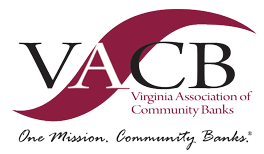By John White and Jason Price
I vividly remember a story shared with me early in my banking career. The CEO, chief credit officer, and senior loan officer of one of our markets go out one day to check a few projects. They pull up to a construction site and find the house is near completion, a good sign since the loan is close to fully funded. Then the senior loan officer realizes this is not the house securing their construction loan. The LOT securing their loan is next door, with a “house” that barely has a completed foundation. The loan is almost fully funded and the bank’s security is nothing but a lot and the foundation of a house. I can’t imagine the feeling that senior loan officer had when he realized the situation, but it could not have been good.
What went wrong? What could have been done differently? There are so many questions to answer in situations like the one described. The truth is, problem loan identification is no easy task. It requires a first line of defense that begins with the loan officer’s ability to recognize problems, a second line of defense based on the credit department’s ability to recognize adverse financial trends, and an independent third line of defense that audits the effectiveness of the internal controls at the financial institution.
The loan officer at the financial institution is in the best position to identify potential problem loans early, as the officer is the relationship manager: the one customers come to first to request a loan; the one having conversations with the borrower about his or her business; the one monitoring the success of the business plan put in place to get a business up and running; and the one within the financial institution the borrower turns to first when things are not going as planned. There are many warning signs of potential problem loans lenders should be aware of, but there is no “one size fits all” list of things lenders should do to identify potential problem loans. Sure, lenders can monitor overdrafts and past dues, but by the time those are spotted, it may be too late.
The first line of defense, identifying potential problem loans before they become problem loans requires experience, continuous training and frequent contact with borrowers. Signs of a potential problem loan with mature business-facing succession challenges are much different from what may be seen in a startup business that lacks working capital to adequately fund growth. We have also realized during the COVID-era that not all restaurants or hotels are created equal. These loan types may be considered a potential problem loan type, but each loan has individual facts and unique circumstances. Training and continuous education are the best ways to ensure lenders are adequately equipped to ask their borrowers’ the right questions and recognize potential problem loans.

The credit department is the second line of defense. Its ability to write and enforce loan policies, analyze borrower financial information, perform trend analyses and monitor loan performance puts this department in a great position to identify potential problem loans within the loan portfolio. As with the first line of defense, there are numerous ways credit departments can identify likely problem loans. A few early warning signs include: inability to collect updated financial information, frequent overdrafts, covenant violations, late payments, over-advances, and deteriorating trends. While these early warning signs are common with potential problem loans, it is even more challenging to identify problem loans in the current economic environment as deferrals and other government-sponsored initiatives mask past-due debts. Focusing on current year trends (look for the rebound after initial shutdown), 6-12 month projections, the potential impact of the business’s seasonality, industry reports, peer comparisons and liquid assets of borrower and guarantors will provide a great deal of insight in the borrower’s ability to service debt beyond deferrals and government-sponsored initiatives.
Lastly, at the third line of defense, it is not the auditor’s responsibility to design processes or controls but rather to test these areas to ensure they are designed and working appropriately. It is critically important to have auditors, either financial statement auditors or internal auditors, with the right skillset and knowledge base to understand and evaluate an institution’s updates to controls and processes based on the current environment. When thinking through these changes, especially ahead of the audit process, half the battle (or 95% of the battle) is documentation. It is critical to make sure processes and controls are updated and memorialized not only for the auditor but to make certain your institution’s team is doing the right things to ensure you create the best opportunity to identify potential problem loans, as well as opportunities to work with borrowers before it’s too late.
Josh White
Shareholder
919.649.8251
josh.white@elliottdavis.com
Jason Price
Credit Risk Senior Manager 615.786.7961
jason.price@elliottdavis.com
This story appears in Issue 4 2020 of The Community Banker Magazine.








